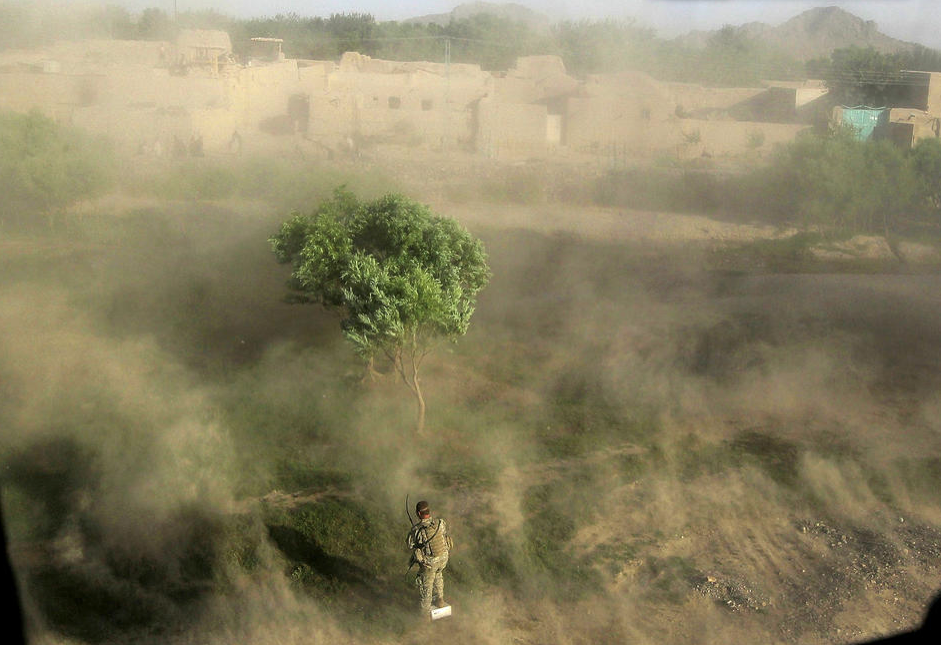(though I´m obviously pre-writing it at an earlier time ;))
Today we´re going to talk about different mechanics of Fog of War. The chaotic, unpredictable nature of the battlefield.
 |
| Fog of War - Image source: nocaptionneeded.com |
For Code Red, we´re going for a layered approach to depict this difficult part. The very first layer is obviously die rolling, which creates a lot of chaos through path-dependency. It´s the usual thing you´d expect in wargames - very lucky or unlucky rolls can of course cut through your plans and create a very difficult environment for planning your attack or defense.
Everybody knows how that works, and we had some pretty incredible cases in our playtests already - an LMG team got shot badly, managed to save all 4 attacks without morale effects, shot back, scord 5 successes and the attacker failed to save all 5 on a threshold of 4+ on a D10. Such things happen, they are unpredictable and part of the Fog of War.
Though obviously that´s not a valid game mechanic. So looking at what else is adding uncertainty and special events in our game, we´re on to the second layer: Fog of War Cards (or event cards).
Anyone who played Code Reds "ancestor" Force on Force will know these played a role. During our first few games of FoF we completely ditched these cards as they screwed the balance of the scenario with Tanks popping up, Special Forces joining one side, sandstorms hitting every second game... the idea was fun, but the effect seemed a little over the top to me to b enjoyable.
So we transformed the Fog of War cards by designing a new set of effects which is constantly expanded. Instead of huge balance-disturbing events we now have a set of effects that happen on a much lower level but may influence the outcome of the game in a much more subtle (but substential) way. Instead of tanks popping up you´ll now see the Machineguns jamming or running low on ammo, cover crumbling under enemy fire, and generally cards giving all sorts boni or mali to rolls depicting the mishaps and extraordinary performances you might find on the battlefield.
To add a twist to this card-scheme, you may now hold the cards and play them at any moment of your choice - so there´s a question of prioritising your effects, do you keep them for a critical situation or play them outright? If you keep them until the end of the game, you might use them to hasten the demise of your enemy by investing them to end the game earlier than it might otherwise (which we´ll talk about in one of the future Diaries covering Scenario Generation).
Now on to a third layer of Fog of War, Ambushes. I´ve though about simlpe ways how to depict the deployment of units that are hidden to the ambushed faction and came up with a mechanic using Ambush Cards.
These cards provide a set of limiting factors (terrain features and map parts) which allow you to redeploy troops on the table or bring in new reinforcements (depending on the card) to the areas outlined by the cards.
So if you hold an Ambush Card saying "Redeploy a unit to a building or wall on the eastern half of the map" you may exactly do this if you play the card. Only restriction is that you may not pop up in the immediaty surrounding of your enemy in close contact, you´ll always have to stay outside 10". And of course you may not remove a unit within enemy line of sight to redeploy it.
Any command die used to activate a unit that has just been deployed or redeployed using an ambush card will trigger an "ambush", granting the ambushing units some one-off bonuses on their rolls during the turn. If you just have them stick around, they might be spotted and will not gain any bonuses in future turns, but might still roll good enough to surprise their prey.
This mechanism allows us to depict guerilla style warfare pretty well - usually there´s one faction able to mount an ambush, usually the local guerillas, the defenders, etc. - while the other faction is pretty well observed and will rarely be able to surprise their opponent.
So holding an ambush card equals a threat from every terrain piece on the board, you don´t know what your opponents restrictions are, the ambush might happen anywhere, but there´s a clear restriction written on the card - as soon as you play the card to execute it, your opponent can see whats going on and verify the legitimate use of the card.
And of course your opponent might hold cards that are utter trash because the tabletop does not have the required terrain features on the right part of the board... but you won´t know!
Last but not least we have the fourght layer of Fog of War, which is the use of dummies for IEDs, pre-planned artillery strikes and things like that. You know from your opponents list that there might be an IED somewhere, but not exactly where. You might figure it out eventually, but he could have messed with your psyche and placed it somewhere else... he might even use an ambush card to relocate an IED to a better place, but you have no idea if that was a real IED or just a dummy to screw with you...?
So while dummies are nice, they will not be used in a widespread manner to obscure the placement of your units - just the important bits, where it would be pointless to know EXACTLY were bad things are going to happen so you can avoid them easily.
That´s the most important points about Fog of War and the unforeseen events that you might encounter. Until next sunday!
No comments:
Post a Comment